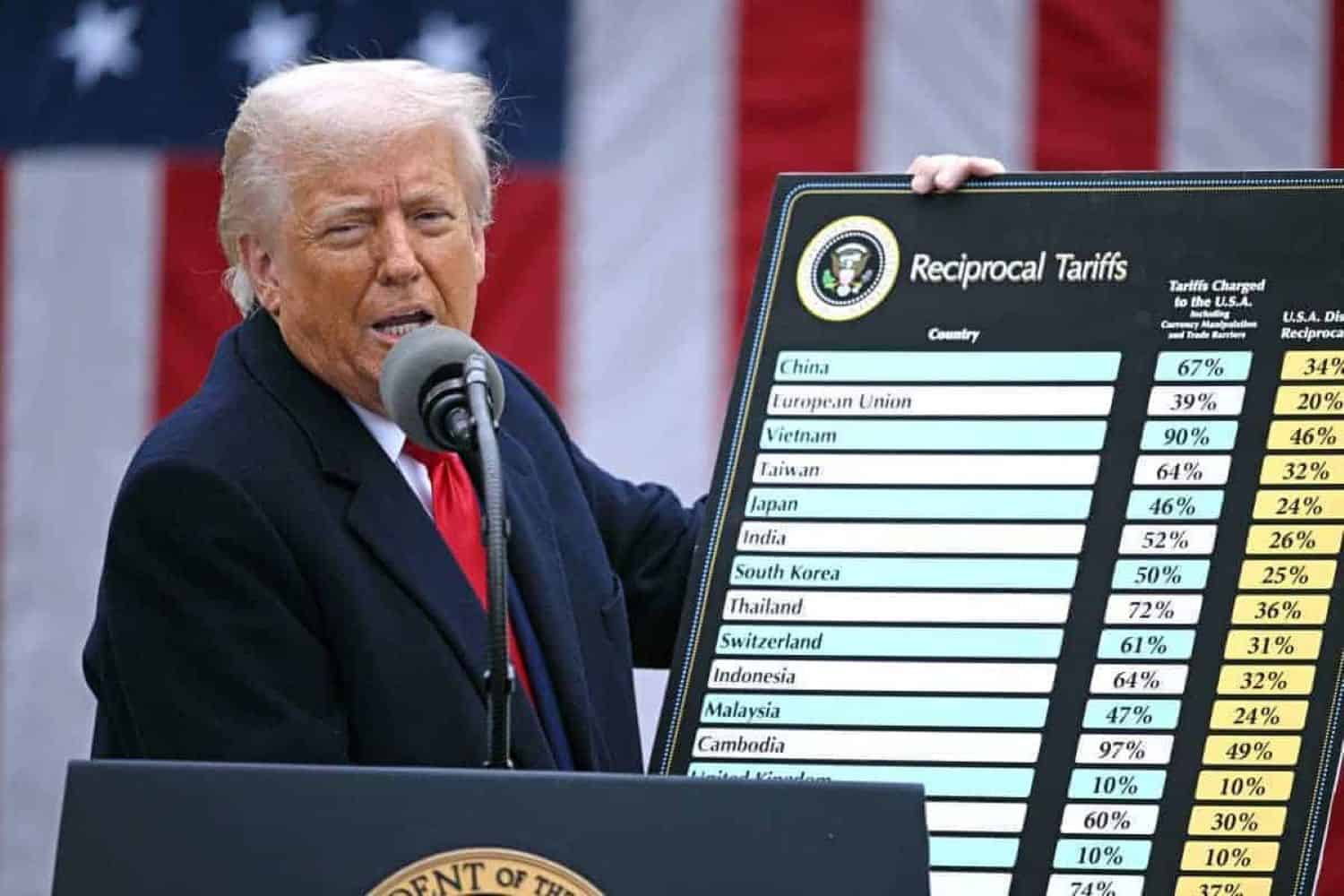A pathway towards pragmatism and patience in South Africa’s trade relations with the United States…

Just over three months ago, Donald Trump took to the Rose Garden at the White House and unveiled his slate of global tariffs against every country in the world.
The numbers cited – ranging from a 10% baseline on every country that had a trade deficit on goods with the US; to the 50% imposed on Lesotho – represented a mix of ideological dogma and some voodoo economic modelling.
In simple terms, Trump’s calculations for tariff rates were simply based on a comparison of trade gaps/surpluses and import values on goods imported to the US.
A country like Lesotho – which exports significantly to the US and can barely afford to buy anything in return; ended up with the highest trade gap, which translated into the highest reciprocal tariff rate.
The problem every country faced was that, just because the economic modelling of the US president makes no sense, that doesn’t mean they could afford to ignore him.
For as long as the US consumer market remains the most lucrative in the world, being able to access it as an exporter is fundamental for many businesses across the world. For South African businesses that are reliant on the US market for their exports, the past few months have been a crash course in the intersections of economics and geopolitics that very few would voluntarily sign up for.
ALSO READ: ‘It’s just gone’ – Trump’s tariffs cost SA company R750m overnight
In the world of global trade, access to markets is not simply a question of producing resources that are of interest to the customers in another country. Ensuring that such products can be sold competitively requires the minimisation and possible elimination of trade frictions such as taxes and tariffs.
Higher taxes and tariffs diminish the affordability for foreign customers and impact on volumes that can be sold to foreign markets.
Ensuring that such costs are minimised falls under the ambit of the government of the day, which has the responsibility of acting as the chief representative of businesses and ensuring that trade deals put in place maximise the prospects of competitiveness, and success for South African businesses.
The problem with trade deal negotiations is that they are fundamentally linked to the state of geopolitical relations between the negotiating countries. The more difficult the relationship, the more challenging it is to find a meeting of the minds and put together a deal that represents the best of what each country wants and can deliver.
ALSO READ: Government must actively manage fallout from US tariffs with trade crisis committee – BLSA
In South Africa’s case, the space for negotiations was suffocated by concurrent events – involving the US’s perception on South Africa’s geopolitical standing; the expulsion of South Africa’s ambassador; and the desire of some South Africans to trumpet the idea of a white genocide that only Trump could apparently stop.
When Trump implemented a 90-day pause on his tariffs for countries to negotiate deals, the litmus test for success was going to be the question of whether the rate ultimately imposed at the end of the pause period was materially better than what was initially threatened. Given the short timeframes, no single country was ever going to actually put together a brand new trade deal, simply because it just does not happen within 90 days.
Instead, each country was expected to create a framework of a deal that would sound interesting enough to Trump for him to issue a more accommodating tariff rate. If a country could put together a framework that was regarded by the US as good enough to warrant a significant revision in proposed tariff rates, then such a country could claim some victory in a war that we all know, produces no winners ultimately.
ALSO READ: US tariff of 30%: Rand weakest in 3 months, thousands of jobs in danger
South Africa’s ultimate rate of 30% was slightly better than the 34% initially imposed, but this revision had little to do with the substance of what South Africa argued during the pause period and more to do with the predilection of the US president to randomly pick numbers and convert them to binding policy positions at a whim.
We know this simply because the US never actually offered any substantive response to South Africa’s proposal.
The difficulty with any framework was that the primary test for whether it was worth entertaining, was whether it would be more favourable to the United States. Deals seen to be nowhere close to favouring the US, were non-starters. Consequently, countries had to dig deep within their nation’s business and political canvas to identify if anything could be offered to the US administration that would meet the threshold.
The European Union made a series of commitments that were ambitious enough to secure a deal, though their feasibility remains fanciful at best.
In South Africa’s case, the Department of Trade, Industry and Competition (dtic) worked on a framework whose single weakness is that it answered the known questions by explaining how economic trade patterns would be rejigged in order to move closer to a deal.
The unknown questions that the dtic could not answer related to Trump’s ideological posture against South African policy and geopolitical stances. Scrapping BEE might sound like an idea palatable to the South African right-wing lobby that has enjoyed access to US lawmakers, but it would have amounted to a significant departure from the country’s longstanding policy – for very little in return.
The tricky part is that conceding on long-held policy positions for minimal gains would come back to haunt South Africa.
ALSO READ: Tau launches urgent support measures for exporters affected by US tariffs
Given the export values in question and the simple fact that Trump was still going to impose tariffs, South Africa’s scope for trade-offs was not very wide, and any concessions on non-trade issues would have ignited new hostilities within the fragile government of national unity.
In the aftermath of the deadline of 1 August, which passed without South Africa actually receiving a response on its framework proposal, the dtic and the Department of International Relations and Cooperation have opted for continued negotiations and diplomacy, rather than the retaliatory approach that stronger countries like China can opt for.
This pragmatic stance – based on the premise that the US negotiators are acting in good faith regardless of the megaphone musings from the White House – is the only sensible stance that avoids getting drawn into mass hysteria. If the US eventually comes to the table and considers South Africa’s framework, there may be further carve-outs from the 30% rate, but this largely depends on the whims of the US president and cannot be relied upon as a long-term solution.
ALSO READ: Trump’s new 30% tariff less about trade and more about power
Beyond pragmatism, South Africa – like most countries – must now move to the patience game and hedge its bets on the question of whether all this is a temporary disruption that will be reversed once the true costs of tariffs hit US consumers hard, or if it will simply come to an end with Trump’s exit from the White House.
If either proposition proves true, the world may yet recover from the interruption in the long run, enriched by the tough lessons of how dangerous it is to be overly reliant on a single consumer market.
If this trend will represent the long-term trade relationship between the US and the world that outlives the end of Trump, the world better start figuring out how to trade in a world where America no longer features as a market worth engaging with. Getting that right, will be a major litmus test for states across the world over the next four years.
This article was republished from Moneyweb. Read the original here.






